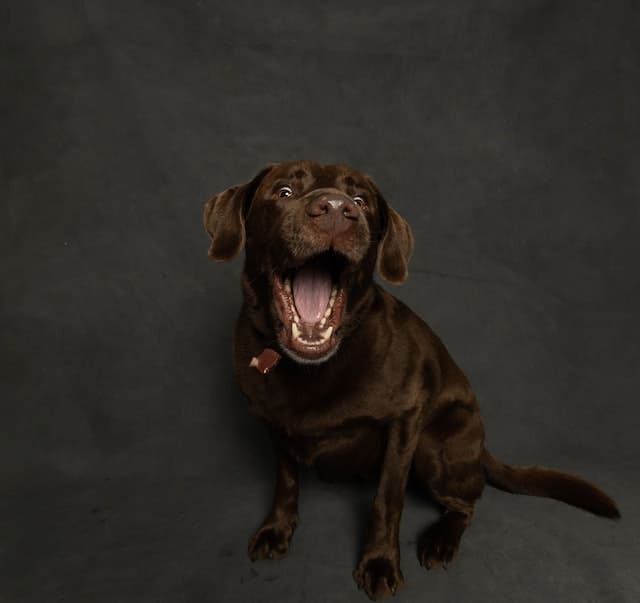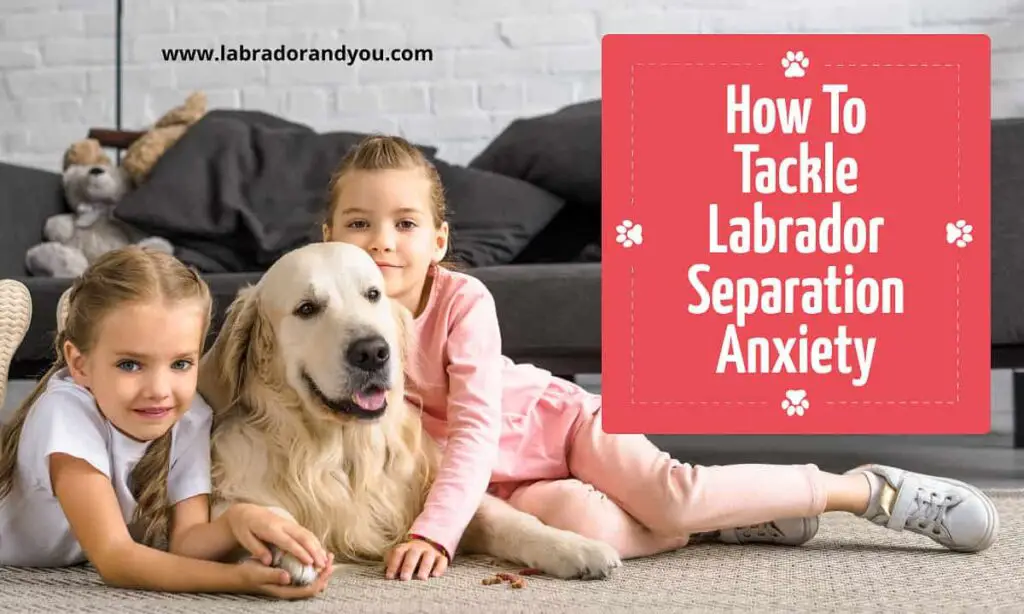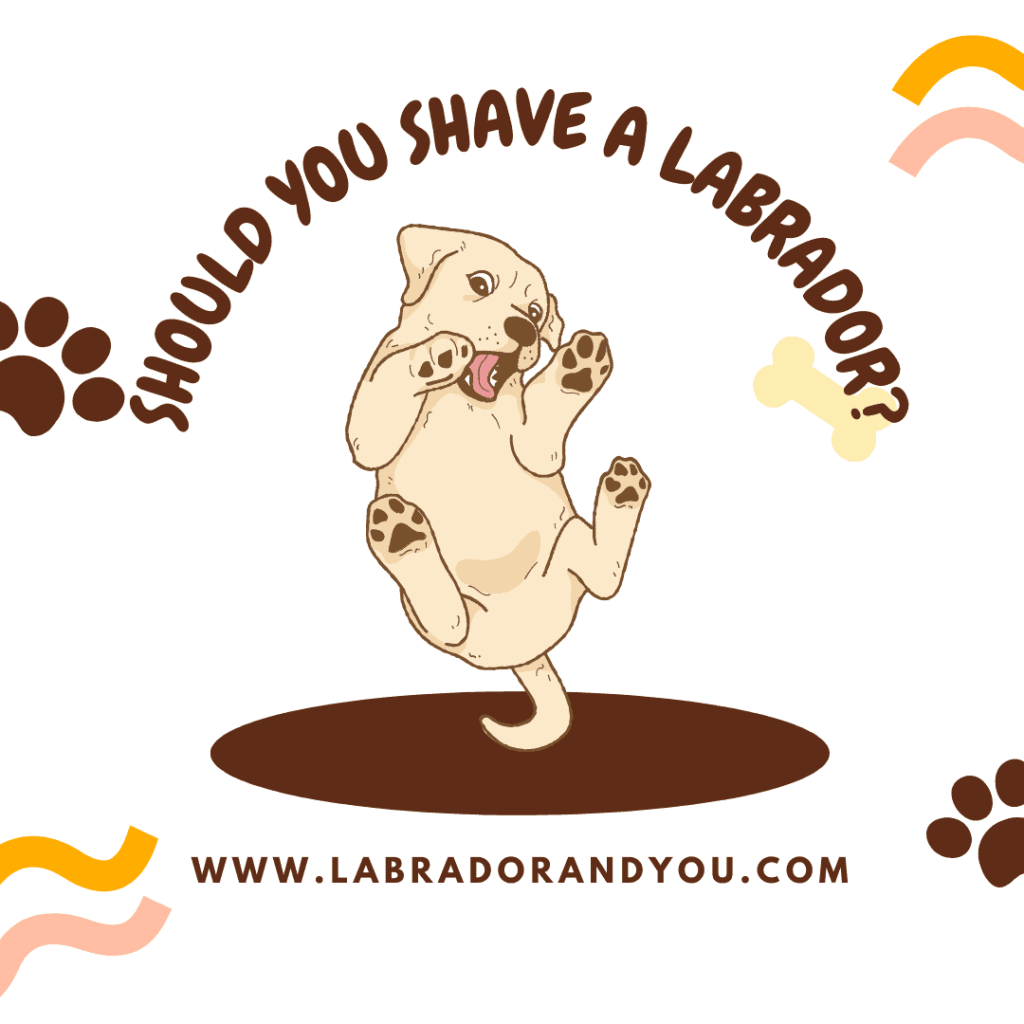Dog elbow callus is painful and unsightly for dogs. Not only do they cause discomfort, but they also lead to serious health problems if left untreated. Dog elbow calluses are thickened, toughened skin that develops around the elbows due to repeated pressure and friction. It is common in giant breed dogs or overweight dogs lying on hardwood floors.
If left untreated, they can cause infection. Limit your dog’s time lying on rigid surfaces, use a soft bed, and exercise them regularly. A healthy dog weight reduces the risk of elbow calli. If remedies like balm, oil, and vaseline are ineffective, the calluses can be removed via surgery.
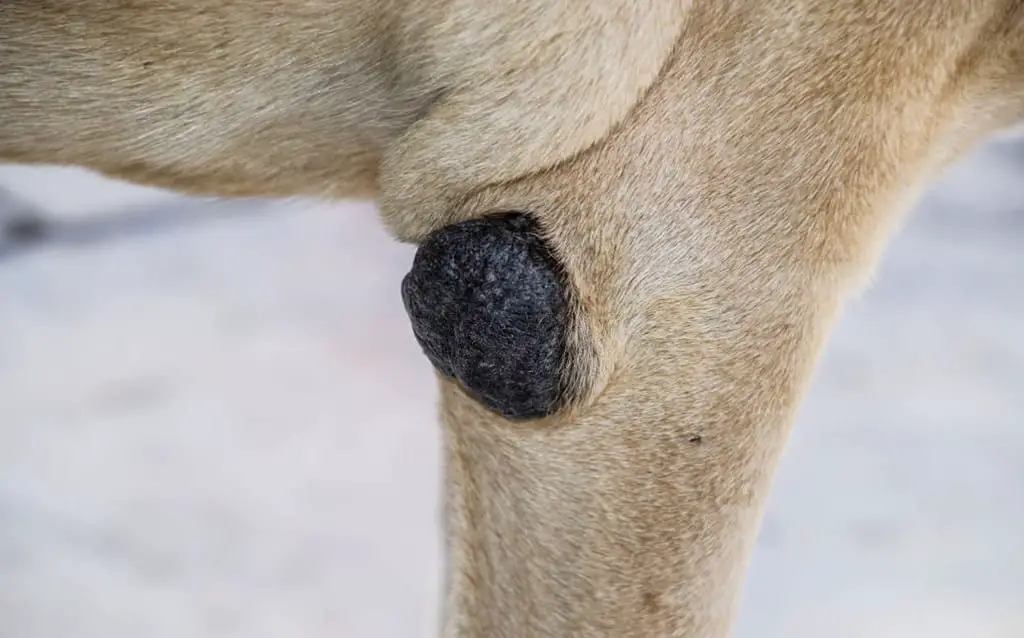
Dog’s Elbow Calluses: What Are They, And How Do They Form?
It often occurs when dogs lie down or sleep on a hard surface like cement or wood floors. It provides inadequate cushioning for their joints. Over time, the constant pressure causes the skin to become dry and hardened. Elbow calluses develop to protect the underlying bone and tissue.
Due to size or genetics, certain breeds are prone to developing elbow calluses. Large breeds like Great Danes, Mastiffs, or Labradors have greater body mass. It leads to more force exerted on their joints when lying down.
Some dogs may have thinner skin in certain areas of their bodies, including elbows. Factors like age also play a role in developing elbow calluses. Older dogs with arthritis might be less mobile and spend more time resting on rough surfaces, causing increased pressure sores.
Besides physical discomfort caused by itching and irritation, untreated dog elbow calluses lead to hair loss and even develop into painful infections.
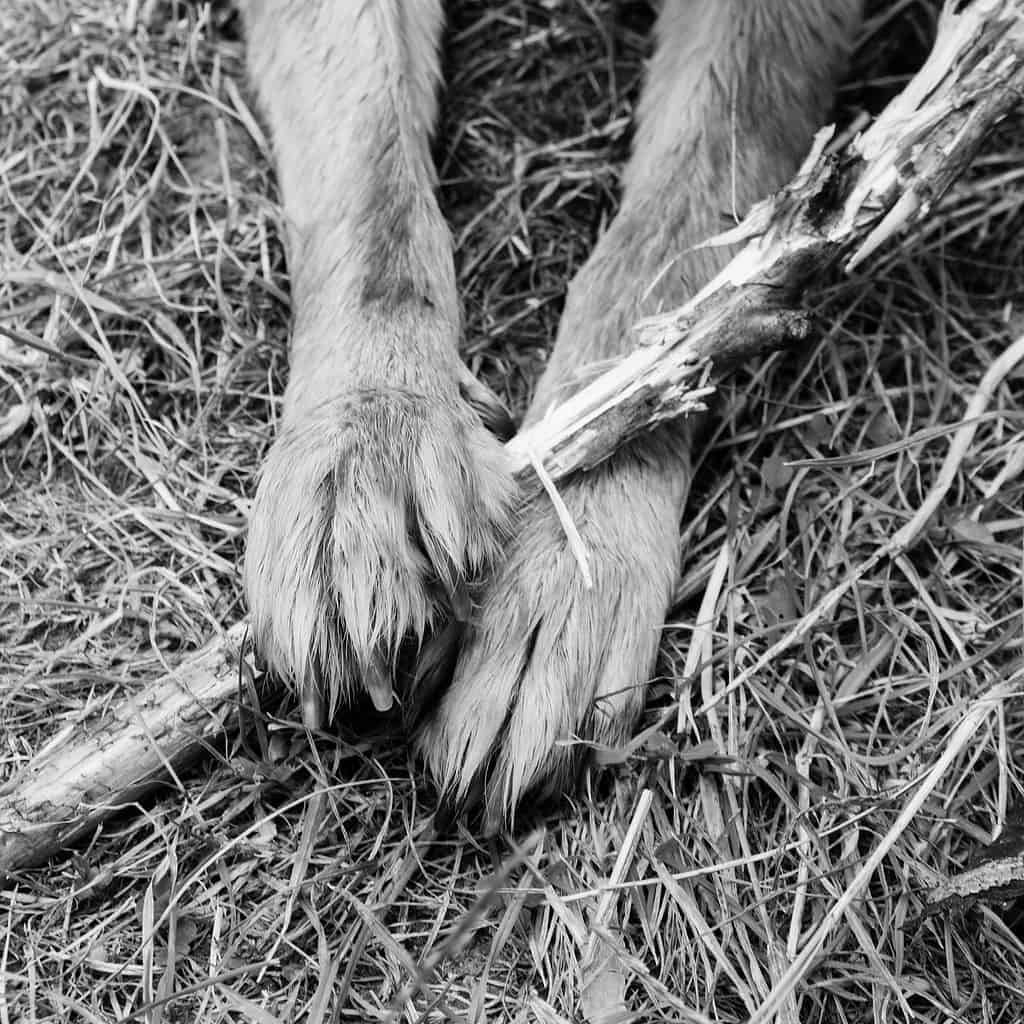
Breeds More Prone To Developing Calluses Labrador Retriever
Certain dog breeds are more susceptible to developing elbow calluses due to size, weight, and coat type. Pet owners must know their dog’s predisposition to callus development and take preventative measures. Here’s a table listing some breeds that are at higher risk:
| Breed | Reason for Callus Development |
| Labrador Retriever | Large breed with a short coat and a tendency to rest on hard surfaces |
| German Shepherd | Large size and weight, coupled with a short coat |
| Great Dane | Massive size and weight, which puts more pressure on joints and elbows |
| Mastiff | Huge size and weight, making them prone to developing calluses |
| Rottweiler | Heavyweight breed with a short, dense coat |
| Boxer | Short coat and weight distribution can lead to pressure on the elbows |
| Bulldog | Short coat and muscular build that can cause callus development |
| Greyhound | Thin coats and low body fat make them more susceptible to callus development. |
Common Symptoms In Dog Elbow Callus For Dogs
Elbow calluses in dogs can cause a range of symptoms, including:
- Thickened and rough patches of skin around the dog’s elbow joints.
- Hair loss on and around the affected area.
- Redness, itching, and irritation in the elbow region.
- Bleeding or cracking of the callus exposing raw skin underneath.
- Infection with pus formation in advanced cases.
- Limping or difficulty walking due to pain and discomfort caused by the callus.
- Worsening of symptoms over time if left untreated.
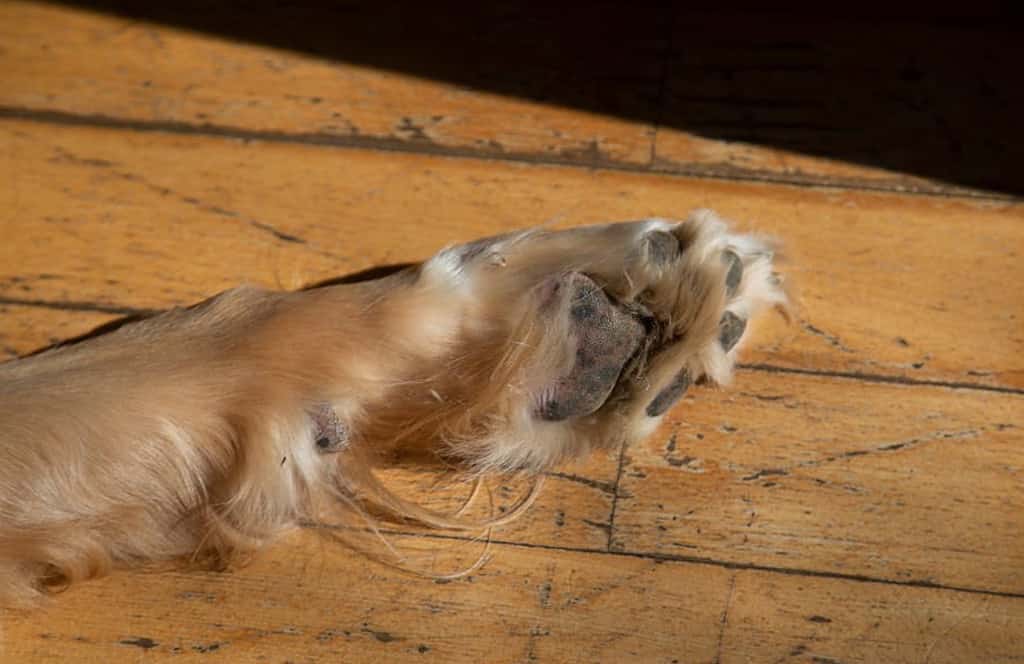
how to treat dog elbow calluses?
Provide soft and supportive bedding surfaces and use specialized dog elbow pads or sleeves for prevention. Adjust your dog’s diet and exercise routine, and moisturize the affected area with John’s Wort oil.
what can i put on my dog’s elbow callus?
A dry and dirty environment can cause further irritation and discomfort. Regularly clean the affected area with dog-friendly mild soap or shampoo.
Rinse thoroughly to avoid any residue that could cause more irritation. After cleaning, apply a high-quality dog balm like organic shea butter, elbow butter moisturizers, or K-9 Callus Cuffs.
It will keep the skin hydrated and supple, reducing the risk of cracks or bleeding calluses. Coconut or avocado oil and aloe vera gel are natural options.
Providing Soft And Supportive Bedding Surfaces
Providing soft bedding is another method. Ensure your dog doesn’t sleep on hard surfaces and has a comfortable resting spot.
- A thick bed with cushioning distributes pressure evenly across your dog’s body, reducing the likelihood of calluses.
- Investing in an orthopedic or memory foam bed or cooling mats work. Elevated beds are in craze
- These beds provide extra support and comfort, which benefits a senior dog or one with joint issues.
- Another option is adding soft blankets or towels to their current sleeping area.
- Wash bedding materials regularly to maintain hygiene standards and prevent skin irritation.

Using Specialized Dog Elbow Pads Or Sleeves For Prevention
These protective accessories are designed to distribute pressure evenly over the pressure points. Many elbow pads and sleeves are made from neoprene or other soft materials offering excellent flexibility and breathability.
They come in various sizes and styles. Choose one that fits your dog snugly without being too tight. These products can help prevent future callus formation and cure existing ones. Combined with natural balms or salves, they can reduce irritation and promote healing.
Adjusting Your Dog’s Diet And Exercise Routine
Overweight dogs are more prone to developing calluses. Incorporate foods with high omega-3 fatty acids like fish or flaxseed oil. It improves a dog’s skin health and reduces inflammation. Supplements like glucosamine or chondroitin promote joint health and cure rough skin.
Regular exercise is vital. Exercise helps maintain muscle mass around joints, which cushions against repeated impacts on hard surfaces. Walking your dog regularly, swimming, or playing fetch are fun exercises to add to the daily routine.
home remedy for dog elbow callus with organic treatments
Using Natural Moisturizers:- Coconut Oil Or Aloe Vera
These natural moisturizers soften your dog’s elbow callus, reduce inflammation, and promote healthy skin growth. If the callus is bleeding or appears infected, seek a veterinarian promptly. Here are some of the best natural moisturizers you can use:
- Coconut oil
- Aloe vera
- Vitamin E oil
- Beeswax Salve
- Shea butter
- Epsom salt solution
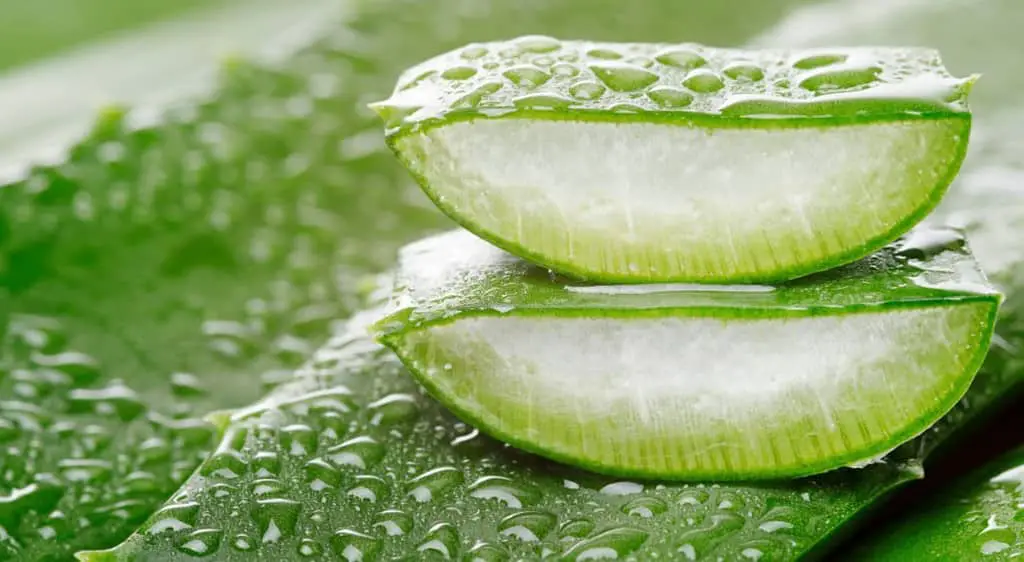
Making Homemade Salves With Ingredients Like Beeswax Or Shea Butter
You can also make homemade salves with natural ingredients to soothe and moisturize the affected area. Here are some steps to create your salve:
- Melt beeswax in a double boiler or use low heat on the stove.
- Once melted, add carrier oil such as jojoba, coconut, or olive oil to the beeswax and stir until combined.
- Add shea butter to the mixture and stir until it has melted and blended.
- Optional: Add essential oils like lavender or tea tree for added benefits.
- Pour the mixture into a clean jar or container and let it cool and solidify.
To use the salve, apply a small amount onto the affected area of your dog’s elbow once or twice daily. The moisturizing properties of beeswax and shea butter soften and heal the skin. This DIY salve is a cost-effective solution for managing calluses at home.
Elbow Butter Moisturizers Or K-9 Callus Cuffs
Use veterinary options like Elbow Butter Moisturizers to hydrate and heal callused skin. It contains natural ingredients like shea butter, beeswax, and herbal extracts that relieve dryness and irritation.
Another option for treating dog elbow calluses is using K-9 Callus Cuffs. These cuffs are made from soft materials that wrap around the dog’s elbows, providing extra padding and protection. These products can manage the symptoms but may not address the underlying cause.
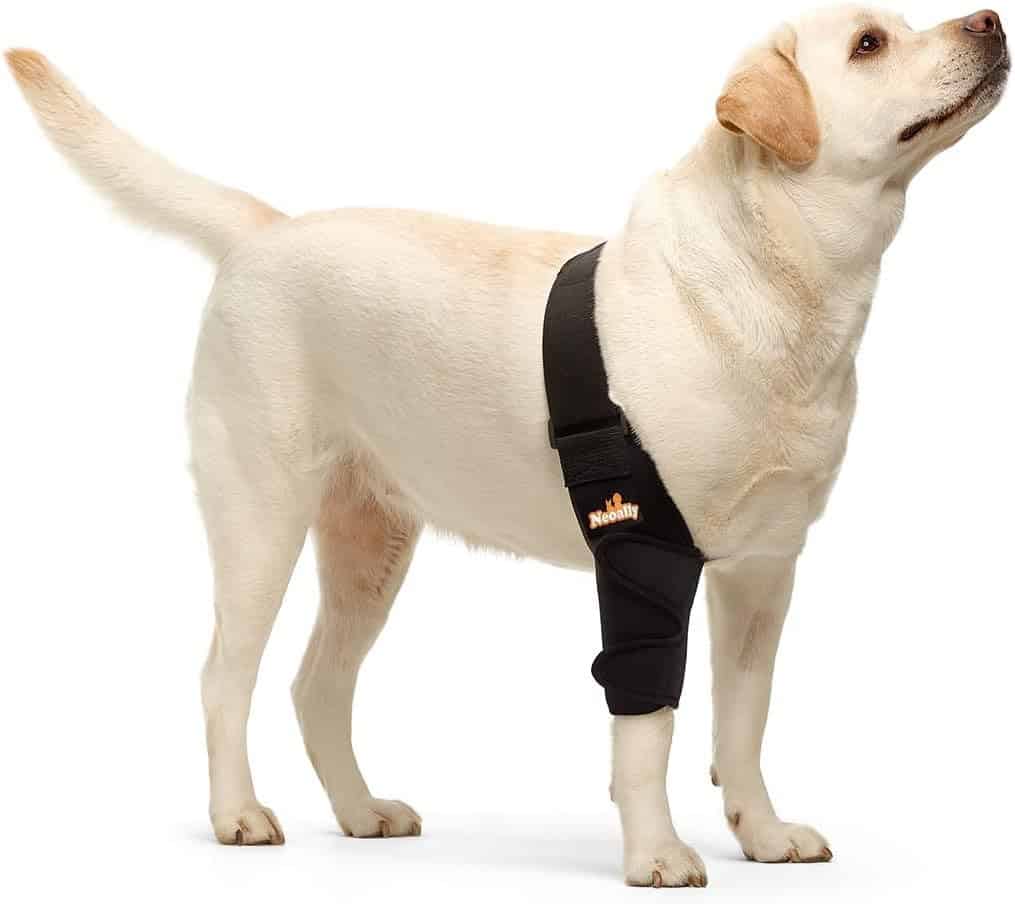
Consulting With A Veterinary Dermatologist For Specialized Care
A veterinary dermatologist is specialized in diagnosing and treating dog skin conditions, including elbow calluses. They may recommend prescribed medications or ointments, laser therapy, or cryosurgery to remove damaged tissue.
They guide preventing future occurrences through diet changes, exercise modifications, and protective measures like elbow pads.
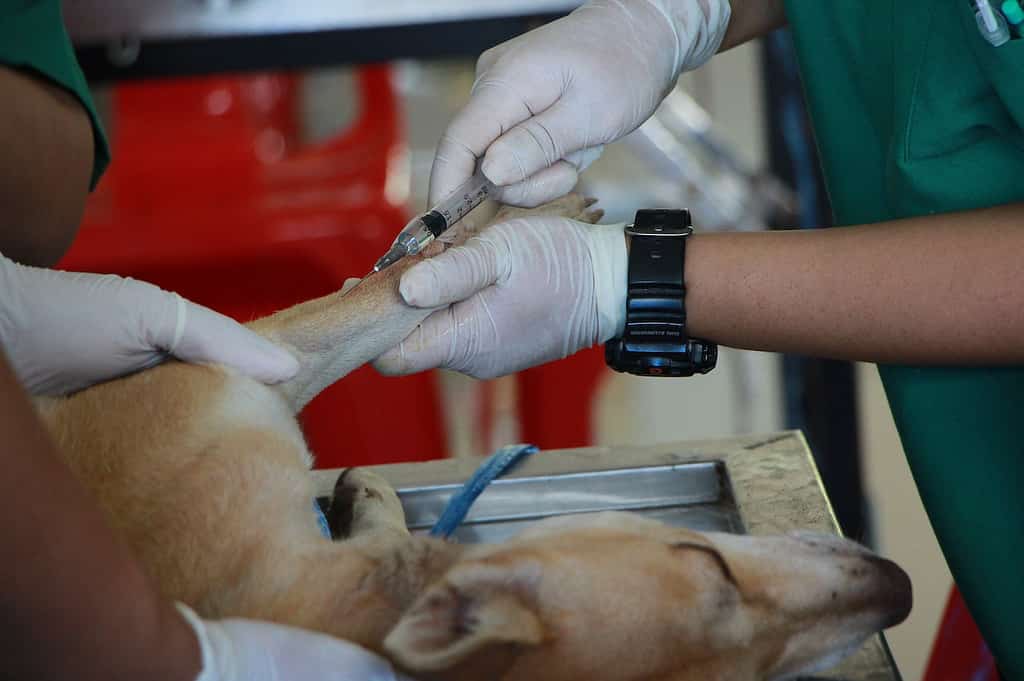
Surgical Solutions For Chronic Dog Elbow Calluses
Cryosurgery, laser surgery, and skin grafting are surgical remedies. They are considered for chronic elbow calluses in dogs that have not responded to other treatments.
Cryosurgery, Laser Surgery, And Skin Grafting As Options
In some cases, surgical intervention may be necessary for treatment. Here are some options:
- Cryosurgery involves freezing the affected area with liquid nitrogen to remove the callus and promote healing.
- Laser surgery: A laser can remove the callus and stimulate new tissue growth, resulting in faster healing times.
- Skin grafting involves taking healthy skin from another part of the dog’s body and transplanting it onto the affected area.
Surgical interventions should only be considered after other treatment options have been tried and failed. Consulting with a veterinarian before surgery is always recommended.
Factors To Consider Before Opting For Surgery
Surgery is usually reserved for severe cases where conservative treatment methods have failed. Sometimes, non-surgical treatments such as elbow butter and padding may be sufficient.
The surgery cost varies depending on the severity and type of surgical procedure required. Discuss all potential costs with your veterinarian before deciding. There are possible risks associated with surgery.
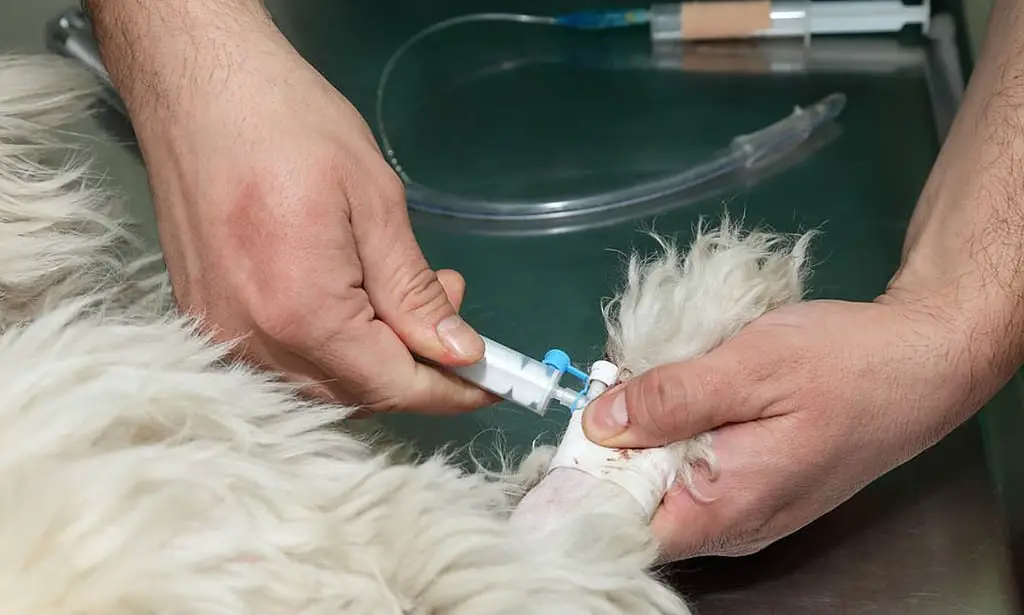
FAQs
Is it normal for dogs to have calluses on elbows?
Dog owners often notice rough and callused elbows. They are unattractive and harmless. However, they can impact a dog’s movement. Dog elbow callus can be treated and prevented.
how to prevent dog elbow calluses?
The best way to treat hygroma is by changing the surface or bedding on which the dog lies. An infected hygroma needs surgical drainage. If the surface is not ulcerated, it can be drained and flushed.
how to get rid of dog calluses?
You can apply petroleum jelly or Vaseline on the rough skin forms of your dog’s elbow calluses. Gently rub them. Reach all the surfaces of the dog calluses and not only the top area. Apply every 12 hours initially and then use it daily.
Can I put Neosporin on my dog’s elbow callus?
Yes you can apply Neosporin to your pet’s sore. If you witness a punctured or deep wound, consult a vet to ensure your dog is safe.
What is the difference between a dog elbow callus and hygroma?
Dog’s elbow calluses are thickened skin around the bony areas. Hygroma appears in the same area, usually filled with fluid. Both are infections and must be treated quickly.
Are dog elbow calluses painful?
An infected or inflamed elbow callus can crack up and bleed. You may see a dog licking the warm, red, and painful elbow callus. It can cause the surrounding area to swell.
What is the best treatment for elbow callus?
A keratolytic skin cream such as alpha hydroxy acid softens rough elbow skin. Glycolic acid is the best AHA for softening rough, thick, and bumpy elbows.
Is Turmeric Good for Calluses?
Turmeric has antibacterial and antifungal properties. It can be used as a topical skin treatment for dog calluses. Applying turmeric will calm itchiness and reduce inflammation.
What is the home remedy for callus?
It is best to soothe your dog’s elbow calluses using Vitamin E. Prevent elbow calluses by moisturizing the skin. You can also use petroleum jelly for home remedies. Blissful dog elbow butter can also be used.
Is Coconut Oil Good for a Callus?
Coconut oil is excellent for dog elbow callus. It has antibacterial properties. You can use the oil for soothing If your dog develops elbow calluses.
Will coconut oil get rid of calluses?
Oil made from coconut is an excellent moisturizer. It also has antimicrobial elements that treat bacterial infections. Massaging using this oil will restore the skin to its original health.
Can Vaseline heal calluses?
Vaseline or petroleum jelly is another excellent moisturizing agent. It will stay longer on the skin and can be applied on the rough skin of giant breed dogs.
Can hygroma be cancerous?
Hygroma appears like tumors. They are not tumors and are not cancerous. Hygroma is a swelling filled with fluid that develops underneath a dog’s skin.
how to treat dog elbow hygroma?
A common medicine used for Hygroma is Amoxicillin, an oral antibiotic. Prevent the condition from worsening by providing bedding with adequate bedding. You can use eggshell or memory foam beds for your dog.
What antibiotics treat hygroma?
Amoxicillin, Cephalosporins, and Clavamox are common antibiotics used for treating Hygroma in dogs. These are oral medications that alleviate the pain caused by hygroma.
How do you shrink a hygroma?
Start by using soft bedding with appropriate padding. You can also apply a bandage to the dog’s hygroma. Keeping the dog’s weight in a normal range is a crucial step. A good weight reduces pressure sores and restores skin health.
How do you treat a bleeding elbow callus on a dog?
The best way to treat a bleeding dog’s elbow callus is by applying a soothing balm. It will heal dry skin and cracks. Provide soft bedding to prevent calluses. Ensure your dog maintains a healthy weight.
Will dog elbow calluses go away?
Dog elbow calluses will not go away on their own. However, they can be reduced in size and appearance with proper care. The first step is to provide your dog with soft bedding and cushioned surfaces to lie on. This will help to reduce the pressure and friction on the elbows.
You can also apply a moisturizer to the calluses several times a day. This will help to soften the skin and prevent it from cracking. If the calluses are severe, you may need to see your veterinarian for treatment. In some cases, surgery may be necessary to remove the calluses.
Why are my dog’s elbows dry?
There are a few reasons why your dog’s elbows may be dry. The most common reason is that they are lying on hard surfaces too often. This can cause the skin on the elbows to thicken and become dry. Other possible causes of dry elbows in dogs include:
- Allergies
- Skin conditions such as eczema or psoriasis
- Nutritional deficiencies
- Parasites
- Medical conditions such as hypothyroidism or diabetes
Author Profile
- Site Owner And Dog Lover
-
Aritra, the founder of Labradorandyou.com, is a lifelong dog lover whose passion ignited for Labradors for their loyalty and intelligence. With extensive research and personal experiences, Aritra has become a Labrador expert, offering a rich resource on the breed. Labradorandyou.com provides reliable, timely, and evidence-based information, including Labrador-specific product reviews, training techniques, and care tips.
Labradorandyou.com was born out of Aritra's passion and his desire to share his profound knowledge about the breed. The site serves as a comprehensive resource, offering a wealth of up-to-date information for Labrador owners and enthusiasts alike
Also by the author
-
 Lab-TypesNovember 17, 2023Old Dog Seizures: Causes, Symptoms, and Treatment Options
Lab-TypesNovember 17, 2023Old Dog Seizures: Causes, Symptoms, and Treatment Options
-
 Lab-TypesNovember 17, 2023Why Is My Dogs Poop Yellow? 8 Reasons & Solutions
Lab-TypesNovember 17, 2023Why Is My Dogs Poop Yellow? 8 Reasons & Solutions
-
 ReviewsNovember 17, 2023The Only Hill’s Science Diet Review You Need To Read
ReviewsNovember 17, 2023The Only Hill’s Science Diet Review You Need To Read
-
 Lab-TypesNovember 17, 2023How To Adopt An Emotional Support Dog?
Lab-TypesNovember 17, 2023How To Adopt An Emotional Support Dog?

